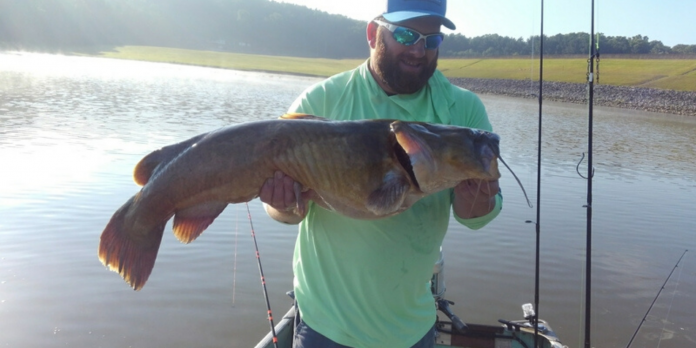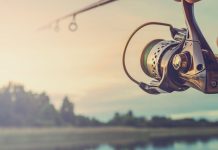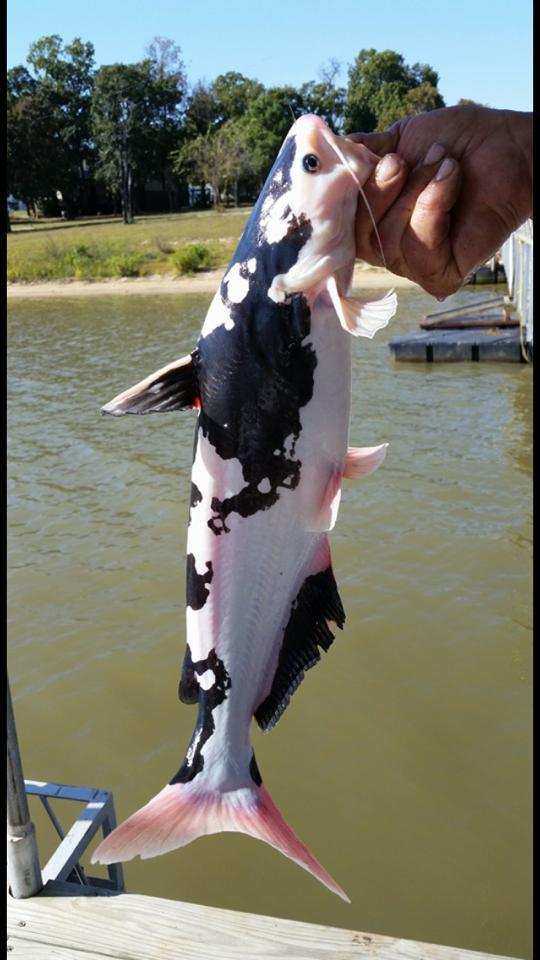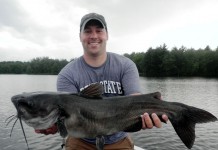Fishing can be a relaxing hobby if you’re just throwing out a hook to see what you might catch. If you’re targeting a specific type of fish or trying to snag something big enough to eat, you may need to spend some time learning a bit more.
There are as many types of bait and lures as there are fish in the sea, each with its own use. Cut bait — pieces of fresh fish — is an effective and inexpensive way to catch various species. How do you use it, and when should you opt for this over things like lures or nightcrawlers? Here’s what you need to know about making your own bait.
Catching Baitfish

To make cut bait, the first thing you need to do is catch some baitfish. The easiest way to do this is to buy a bag of minnows or bluegill from your local bait shop, but you don’t need to spend money to make your cut bait. All you need is a cast net and some patience. Find some shallow water and toss your net. Throwing a cast net takes a bit of technique, but once you get that down, catching bait will be easy.
We recommend having a bucket or cooler to store your fish before you turn them into cut bait, if for no other reason than dead fish get slimy fast. Trying to slide a slippery piece of fish flesh onto a hook is a great way to get hooked yourself.
Making Cut Bait
Once you have a handful of little baitfish, it’s time to start making your cut bait. Make sure you have the right knife on hand. Since you’ll be cutting through bones, you won’t want to use your filet knife to make your cut bait since you’ll make it dull pretty quickly. Instead, keep a serrated knife around that will easily slice through both bones and flesh.
The size of your cut bait will vary based on what kind of fish you’re trying to catch. You don’t want to waste anything, so if you have tiny bluegill or sunfish, you may be better off rigging it up for live bait instead of cutting it up.
Don’t wash your cut bait before you use it. Leave it as is. All the blood and oils will serve to attract the fish you’re trying to catch. Catching your baitfish in the same area where you’re planning on fishing for large catfish or other species gives you a bit of a leg-up. After all, your bait is already part of the local food chain.
When to Use Cut Bait
When should you use cut bait? That depends entirely on what you’re trying to catch. Some species, like catfish and alligator gar, are attracted to cut bait. If you’re trying to land one of these species, you can’t go wrong with a piece of fresh-cut bait. Some fishermen, like YouTuber Alex Corriveau of the channel Angling with Alex, use cut bait to land elusive “dinosaurs” like bowfin. Bowfin won’t go after much else, and it takes several hours to get one to fully take the bait, but it’s worth it.
The baitfish you catch will depend on where you’re located. However, popular choices for cut bait include bluegill, perch, freshwater drum, buffalo and all species of carp.
Mind Local Fishing Laws
Tossing a cast net into the water and fishing with whatever you catch is an activity nearly as old as the sport itself, but you need to be mindful of local fishing laws wherever you’re casting your line. Some species of fish might be illegal to catch or use as bait, while others might be considered invasive. Therefore, you can’t throw them back if you do catch them, unless you want to be subjected to fines.
Take the time to learn your local fishing regulations so you don’t find yourself on the wrong side of the law when you’re just trying to enjoy your day.
Enjoy Your Time on the Water
Whether you’re fishing for dinner or just doing some relaxing catch-and-release, casting out a line is a great way to unwind. If you don’t want to spend a lot of money on bait, catching and cutting your own can be a great way to help you land some of the biggest fish in your area.
Looking for Your Next Spot?
If you want a new place to test your cut bait skills, or are just looking for more information on your current spots, check out Fishidy. Fishidy is a free fishing app that allows you to post pictures and connect with other anglers. There’s also the option to pay for access to Fishing Hot Spots Maps contours and species-specific tips. Check it out at Fishidy.




